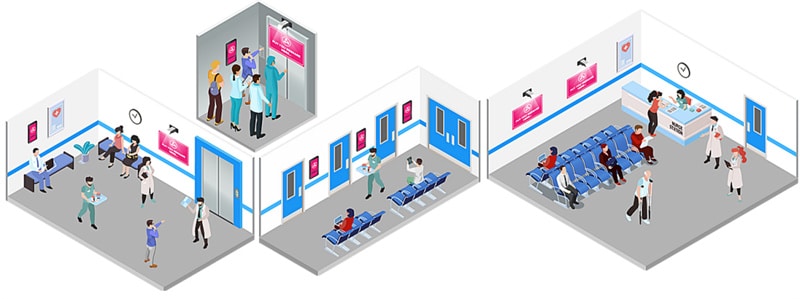
Some marketing strategies are so good that you don't even notice their introduction. They seem to slip you by to the point where you feel like they have always been in place. Yet, all of the marketing strategies in this article are all post-‘00s. Sure, there may have been a few forward thinkers who pulled these ideas out of their hats during or before the 00s, but as for widespread adoption, these are still pretty new ideas.
1. Cinemas Using Signs Instead of Posters

Think hard and think back, when did cinemas start doing this as a rule? You may recall a few of them may have a TV running with a few trailers, which they often put near the ticket aisle. But, look at the popular cinemas of today (the ones that are still open). They are big buildings, and they have halls of digital signs that are showing promotional content for their movies.
Digital signs are pretty cheap these days, and the bigger cinema complexes have really capitalized on them. Have you also noticed how strategically the seating and standing areas are arranged? This is to curate where you use your phone. They want you walking down halls or standing in queues rather than sitting and looking at your phone. They do this so you are more likely to look at the trailers on their digital signs.
2. Showing Video Game Footage
This is not nearly as prevalent in the past as it used to be. If you were lucky enough to get tickets to gaming conventions, people used to be gathered around big TVs watching people play games. These days, a player on a single system may have his or her gameplay broadcast among several digital signs.
You see game footage and gaming talks plastered onto digital signs all over the event, including in the bathroom and eating areas. Live events are streamed and mirrored across signs around the building. Plus, if you go to comedy and other speaking events, they too have far more digital signs mirroring their content than they ever had in the past.
3. Pre-Booking Items on Hotel Menus
You have an interactive digital sign in your room, and you can see the food stuff that you can eat in the restaurant. Instead of simply presenting you with a menu, they show you the things you can eat. The great hotels have a way of adjusting the color and composition of their moving images so that even the slices of toast in the morning look like golden brown steaming slabs of heaven.
Smaller hotels may not offer such a service, but they have digital signs outside the restaurant so that people can see what is on the menu long before the restaurant opens for breakfast, lunch or tea.
4. Digital Signs in Waiting Rooms

Admittedly, there were some vets clinics putting TVs in their waiting rooms long before the 00s, but it only recently that the content has taken any sort of sophisticated turn. Back in the old days, it was cheap cartoons of dogs being scared of fireworks and tick shampoo ads. These days, the stuff you see in vets clinics is close to info-tainment.
It is the sort of content you see companies publish in YouTube to inform and entertain their potential customers. Added to which, modern digital signs feature content that is specific to the vet’s clinic rather than just veterinary brand content.
For example, you may see info-tainment about the itchy dog and his fleas, but at the end, it also says, “We stock X brand and XX brand of flea medication right here.” Or, “We offer XX vaccinations for dogs right here for $X, no appointment necessary.”
5. Rotating Slideshows on Real Estate Signs
The weird thing about this trend is that it was born because of small window sizes. It started in the United Kingdom, where estate agency offices always did best on prominent streets, typically in bigger cities. However, the costs and taxes of larger commercial spaces are astronomically expensive. This left estate agents with tiny showrooms and small windows, despite the fact they were selling million-dollar buildings.
Instead of cluttering their small showroom windows with posters of houses, they put small digital signs in their windows. Using software like Kitcast.tv, they were able to create slideshows of their online content and run it on their digital signs. That way, they were able to feature a single house per digital sign, but they showed its front and statistics on one slide, and images of its energy rating and bathroom on another, and its biggest selling points on another slide, and so forth.





